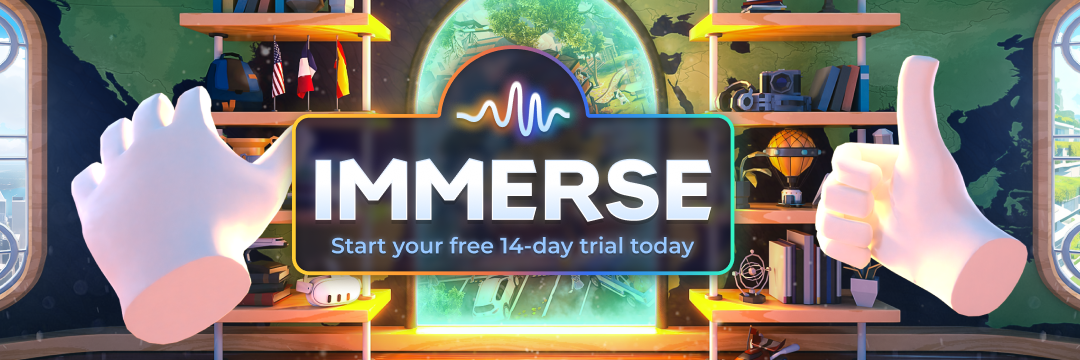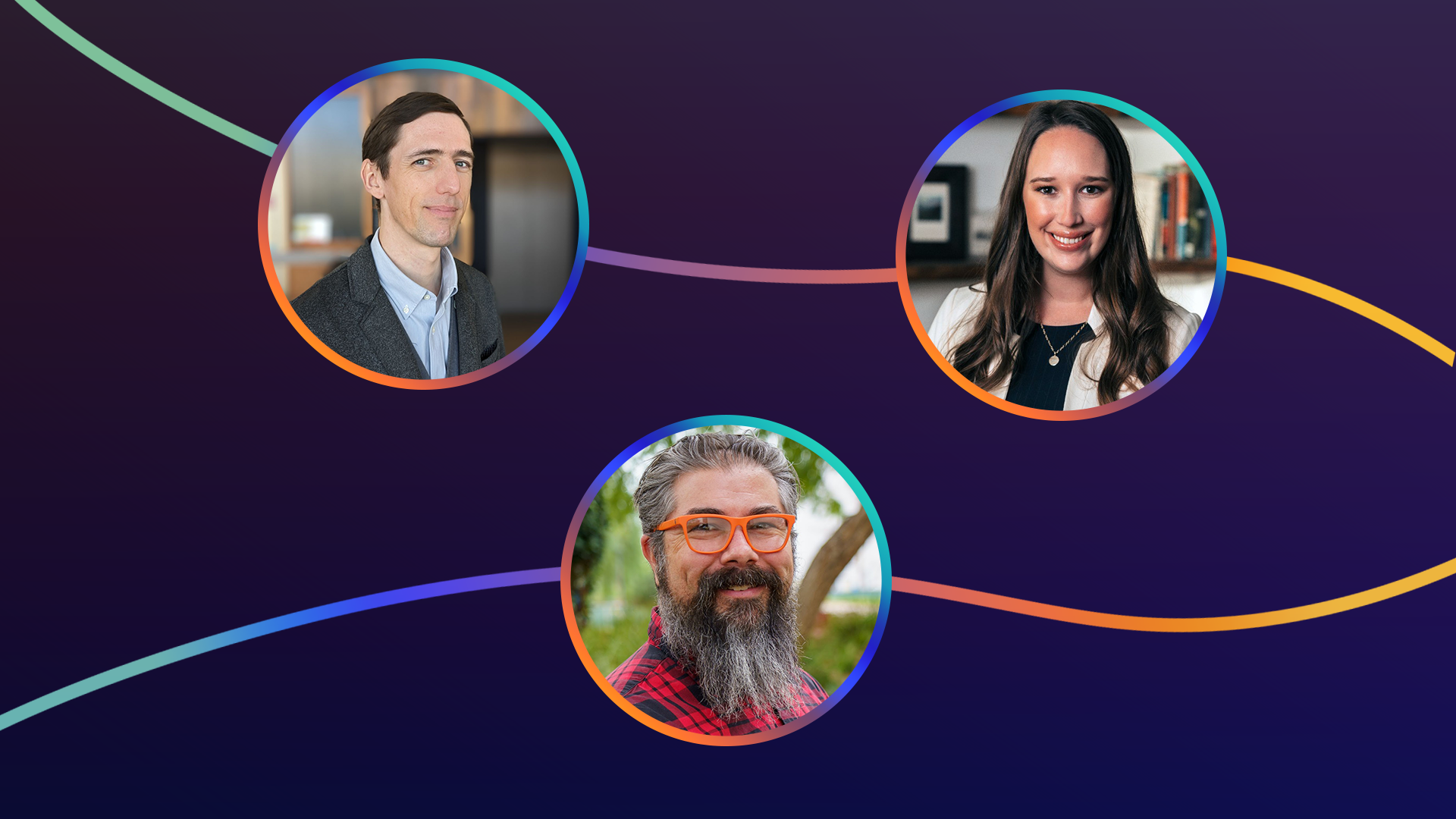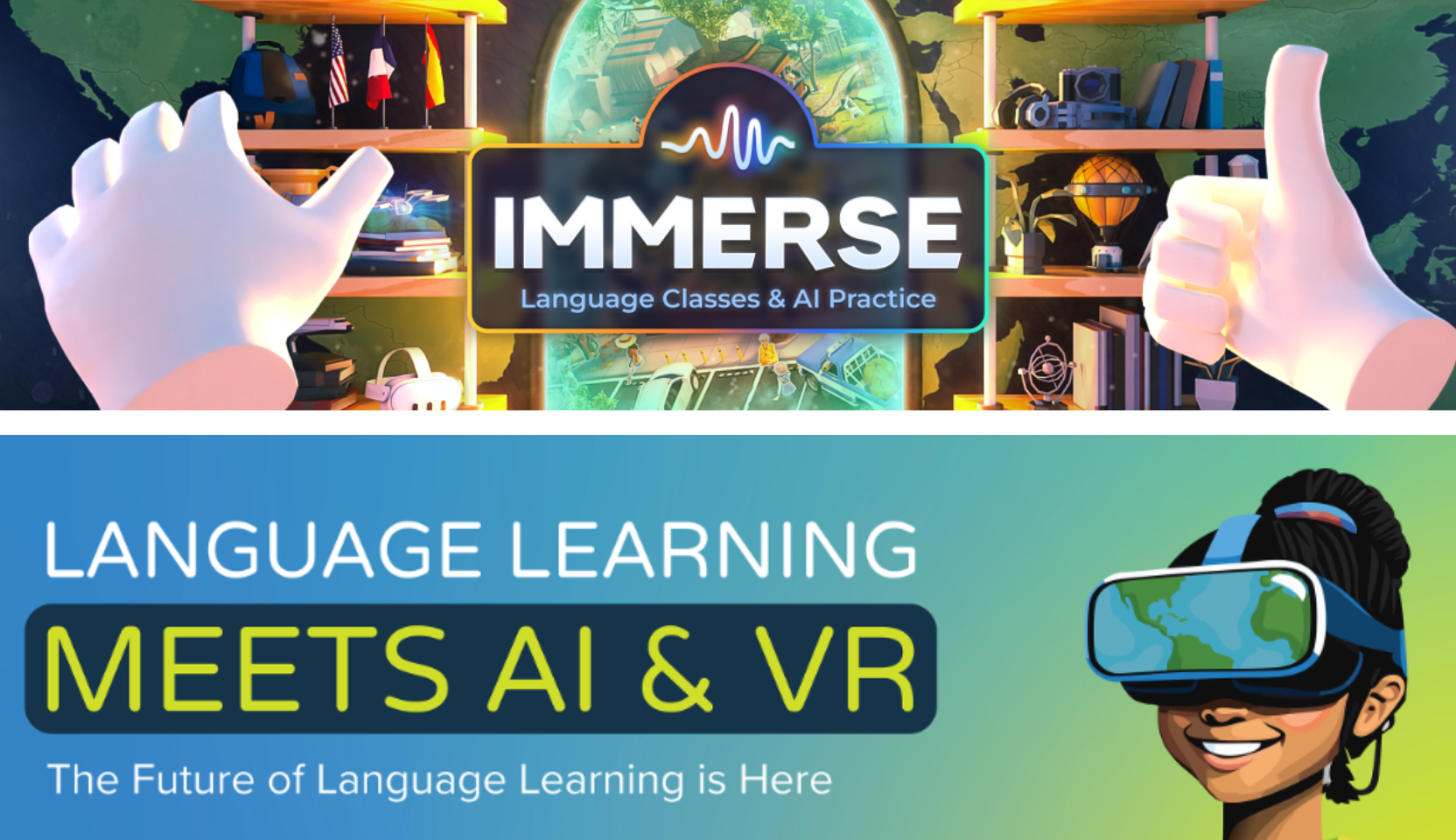Immerse insights:
- Language immersion is the best way to study a language if your ultimate goal is to learn to speak fluently
- Language immersion opportunities for adult learners include social VR, language immersion travel, language “villages,” and single-player VR apps
- Language immersion should include opportunities for speaking as well as listening
There are lots of ways to learn a language, but if you want to end up speaking fluently then immersion is likely the best one for you.
In a nutshell, language immersion means learning by being surrounded by the language and using it to communicate in a variety of authentic situations. Immersion settings may or may not include explicit teaching.
What makes language immersion so effective is that it combines three key features of successful language learning:
- Social interaction - the main purpose of language is to communicate with others, and there’s strong evidence that our brains are wired to learn languages through social interaction
- Embodied learning - language learning is more successful when it draws from sensory input and physical interaction with the environment
- Cultural context - culture and language are inextricably linked and thus best learned together
Language immersion preschools and elementary school programs have exploded in popularity, but immersion is not just for kids. So how do adults go about finding opportunities for language immersion?
Read on to learn about four different ways of getting yourself immersed in a new language.
4 types of immersion that will get you speaking fluently
1. Social VR
Virtual reality may seem like a relatively recent technology, but it is already transforming the world of language learning. In fact, VR may be the best way to learn a new language.
At first glance, it might seem like the ideal way to experience language immersion is by traveling to a place where the language is spoken. But virtual reality is actually an even better option for a couple of reasons.
First, few people have the time or financial resources to spend a significant length of time in another country, so language travel tends to be a relatively short language immersion experience.
Another obstacle is that just being in a country does not guarantee you’ll find people to talk to beyond store clerks and waiters. And even if you do manage to strike up a conversation with locals, you may find that they prefer to communicate with you in English, regardless of whether it’s even your first language.
Language immersion in social VR, on the other hand, is available on an ongoing basis. Instead of one brief, intense visit, you can do language immersion in VR for years if you want to. This not only means more language exposure in the long run, it also means there’s time to make real connections with other speakers.
In addition, most people find it less intimidating to speak a foreign language in VR, where they appear in the form of avatars. Using an avatar means they can talk without anyone looking at them, which reduces the “stage fright” aspect of speaking in front of others.

If you get nervous at the mere thought of carrying on a conversation in a foreign language, you’ll probably find it a lot easier in virtual reality where no one can really see if there’s spinach in your teeth or you’re having a bad hair day.
In fact, research shows that speaking a foreign language in VR not only increases confidence, it even improves performance.
There are a number of places in virtual reality to find people who want to practice speaking with you, whether through a VR language exchange, social VR platforms, or a social VR platform for language learning like Immerse.
If you feel a little nervous about language immersion, speaking a new language, or meeting new people, then Immerse is probably your best bet.
Immerse provides gentle immersion, where you can speak at your own level and get support to say whatever you want to communicate.
Plus, Immerse gives you unlimited access to live lessons, conversation events, AI practice, and social learning games.
And since Immerse’s virtual world includes over 40 different scenes like airports, restaurants, parks, and homes, you’ll get authentic practice learning through real-life scenarios.

2. Language immersion travel
While social VR is the simplest way to experience effective language immersion, there are still a lot of benefits to spending time in a country where your language of choice is spoken.
For many people, the prospect of going abroad and communicating in the local language is a powerful motivator. Learning a new language takes hundreds of hours, so if taking a trip is something you’re able to do, promise it to yourself as a reward. It will help keep you focused and excited about learning.
Going abroad is also an amazing way to experience culture and history firsthand. Seeing historic sites, sampling local cuisine, and experiencing the climate and landscape will add an extra dimension to your understanding of the language. Plus, you’ll have fun!
A language immersion trip can be something you arrange yourself, booking your own flights and finding your own opportunities for immersion. In almost every case this will be your cheapest option, and you’ll have full control over your itinerary.

Photo by Sara Dubler on Unsplash
Alternatively, there are immersion trips organized by experienced professionals who take care of the details for you so you can just relax and focus on the language. These pre-arranged trips vary widely in the type of immersion they offer. Some hire language teachers to accompany you, others don’t. Some will provide you with a hotel room, others will provide a shared living situation to maximize opportunities for practice.
If you decide to book an organized language immersion trip, check out as many companies as possible so you can find a trip that provides the type of immersion experience you’re looking for.
3. Language villages and immersive classes
Since traveling abroad for language study is not possible for a lot of people, some schools have set up language “villages” where learners can experience a language immersion environment without leaving their home country.
Around the world, this is a popular way to learn English. In the U.S., most domestic language villages for adults provide Spanish or French immersion, but there are immersion programs for other languages as well.
If spending a week away from home is not for you, many language schools and community colleges offer weekly classes that aim for an immersion model of learning. In immersive classes, highly trained teachers guide communication-based activities and interactions among the students, using only the language they are learning. Look around in your area to see what’s available, and be sure to watch for the word “immersion” or “immersive” in the class description.
4. Single player VR apps
One question learners often ask about language immersion is whether watching movies or TV shows counts. The answer is that popular media can provide useful listening practice (depending on your language level), but it’s not the right kind of language practice for learning to speak.
And if fluency is your goal, you need to get talking!
In addition to the social VR language app Immerse, the last several years have seen the creation of a number of apps where you can experience language immersion on your own in VR. Typically, solo player VR apps give you language immersion by providing listening, reading, and even speaking opportunities with chatbot characters you can interact with.
These apps will help you learn to have basic interactions about food, household activities, recreation, and other high-frequency topics. While you don’t get to practice talking to real people or learn about cultural nuances in the language from a live instructor, you will learn a lot of important vocabulary and can practice saying the words and phrases repeatedly without feeling self-conscious. .
There’s no time like the present
Whether you choose virtual reality, international travel, or the language school downtown, language immersion will help you finally achieve your dream of speaking another language smoothly and with confidence.
So don’t just wish you were fluent - go make it happen!


Miranda Novash


.png)



.png)





